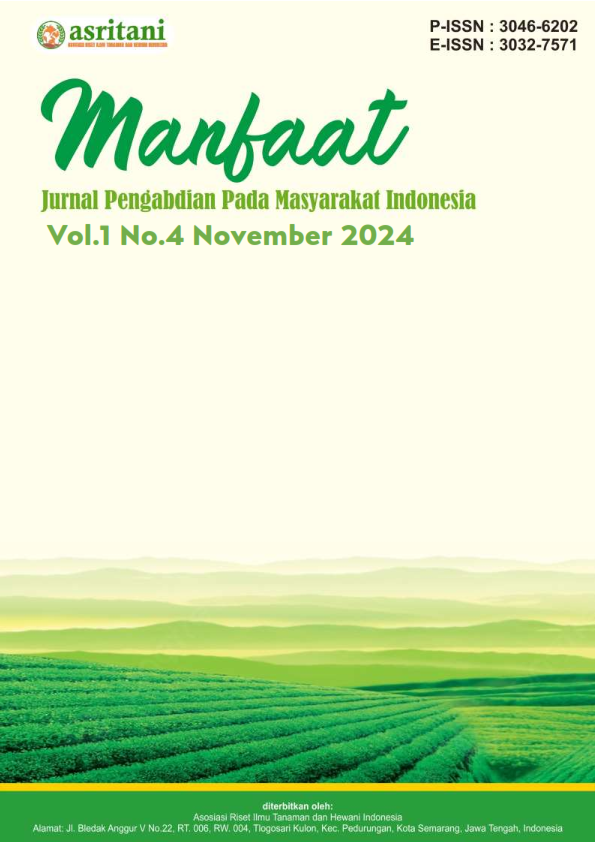Meningkatkan Keaktifan Siswa dalam Pembelajaran Klasifikasi Makhluk Hidup melalui Game Interaktif Wordwall di Madrasah Aliyah Hidayatul Insan
DOI:
https://doi.org/10.62951/manfaat.v1i4.141Keywords:
Student engagement, classification of living organisms, interactive games, Wordwall, educational technologyAbstract
Biology learning, particularly the topic of the classification of living organisms, is often considered difficult and boring by some students. To address this challenge, a more engaging and interactive approach is needed. One effective solution is to utilize game-based technology, such as Wordwall, which allows students to actively learn through various educational games. This study aims to enhance student engagement in learning the classification of living organisms using interactive Wordwall games. Through a community service method, this activity involved teachers and students from several schools to integrate Wordwall as a learning tool. The interactive games provided by Wordwall include various types of activities, such as puzzles, quizzes, and matching games, designed to help students better understand the concepts of classification of living organisms. The implementation of this program is expected to improve student motivation, involvement, and understanding of the material. Furthermore, it is hoped that the use of this technology will provide a more enjoyable learning experience and increase the effectiveness of classroom learning. The evaluation conducted shows a significant improvement in student engagement, as well as a better understanding of the material compared to traditional teaching methods.
References
Arends, R. I. (2012). Learning to teach. McGraw-Hill Education.
Arikunto, S. (2013). Prosedur penelitian: Suatu pendekatan praktik. PT Rineka Cipta.
Creswell, J. W. (2014). Research design: Qualitative, quantitative, and mixed methods approaches. SAGE Publications.
Hake, R. R. (1998). Interactive-engagement vs. traditional methods: A six-thousand student survey of mechanics test data for introductory physics courses. American Journal of Physics, 66(1), 64–74.
Hamzah, B. (2020). Penggunaan media interaktif dalam pembelajaran sains. Yogyakarta: Deepublish.
Johnson, D. W., & Johnson, R. T. (2009). An educational psychology success story: Social interdependence theory and cooperative learning. Educational Researcher, 38(5), 365–379.
Kemendikbud. (2018). Kurikulum 2013 revisi. Kementerian Pendidikan dan Kebudayaan Republik Indonesia.
Nunan, D. (1999). Second language teaching & learning. Heinle & Heinle Publishers.
Prensky, M. (2001). Digital game-based learning. McGraw-Hill.
Santrock, J. W. (2017). Educational psychology. McGraw-Hill Education.
Sudjana, N. (2011). Dasar-dasar proses belajar mengajar. Sinar Baru Algesindo.
Sugiyono. (2017). Metode penelitian pendidikan. Alfabeta.
Sukarno, M., et al. (2015). Teknologi pendidikan dalam pembelajaran modern. PT RajaGrafindo Persada.
Susanto, A. (2013). Teori belajar dan pembelajaran di sekolah dasar. Kencana.
Trianto. (2010). Mendesain model pembelajaran inovatif-progresif. Kencana.
Wibowo, A. (2018). Pengembangan media pembelajaran berbasis game. Yogyakarta: Universitas Negeri Yogyakarta Press.
Wordwall. (2021). Interactive and engaging teaching tools. Retrieved from https://wordwall.net
Downloads
Published
How to Cite
Issue
Section
License
Copyright (c) 2024 Manfaat : Jurnal Pengabdian Pada Masyarakat Indonesia

This work is licensed under a Creative Commons Attribution-ShareAlike 4.0 International License.





